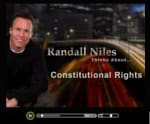Separation of Church and State
(Read Separation of Church and State, Part 1 First)
Separation of Church and State – What Is the Goal?
Americans also differ as to what the goal of the First Amendment really is. Is it to ensure complete noninvolvement of the state in church affairs and vice versa? Is it to ensure neutrality of the government toward those of various religious beliefs or no belief at all, thus ensuring equal rights for all? Or is the primary goal of the First Amendment to secure religious liberty, ensuring that all Americans have free choice in what they believe and the freedom to express or not express those beliefs?
Separation of Church and State -- The Cases
The following principles have emerged from the cases in which the Court has hashed out the parameters of the separation between church and state for past 60 years:
- The government must remain neutral, neither favoring or opposing religion or non-religion. For example, the government must be content-neutral when issuing permits for groups to use public property for meetings, neither favoring non-religious groups over religious groups nor favoring one denomination over another. Public schools must be neutral when allowing extracurricular groups to use the school property for meetings and may not favor non-religious groups over religious groups or vice versa.
- The government may not sponsor, endorse or appear to sponsor or endorse religion. For example, the public school system cannot write or require the recitation of prayers. Religious messages and symbols may only be displayed on public property where it is clear that they are not a government endorsement of a particular religion because they have a secular purpose or are clearly private speech by individuals or non-government groups.
- The government may not encourage religious practice in a way that is coercive as could be the case where a religious observance is declared to be voluntary but circumstances make an individual’s non-participation undesirable or unlikely, such as prayer at a public school graduation ceremony.
- The government may not interfere with a person’s religious ideas, but it may interfere with his actions. For example, the government may prohibit drug use although an individual maintains drug use is necessary to his religious practice.
- The government should attempt to accommodate religious belief, such as releasing children from public school for off-campus religious instruction, but is not required to change widespread government procedure which applies neutrally to the general public to accommodate individual religious belief. For example, the Court held that the government need not change the Social Security system to accommodate an individual’s religious objection to being assigned a Social Security number.
- The government does not violate the Constitution when it enacts broadly applicable benefit programs for a valid secular purpose although religious groups may ultimately benefit from the program. For example, the Court has upheld school voucher programs where enacted to provide educational assistance in a failing public school system although many parents chose to use the vouchers to send their children to religious schools.
Separation of Church and State – The Common Misunderstanding
Today many Americans misunderstand the words “separation of church and state,” assuming that the law requires that public life must have nothing whatsoever to do with religion. They mistakenly believe that they should not discuss their own religious beliefs in public forums or even acknowledge their own religious traditions or heritage. This is an overreaction as well as a misinterpretation of the law for two reasons.
- The concept of “separation of church and state” applies to the actions of the government only. It does not apply to private groups or individuals. Individuals and non-government groups are free to practice their religion, have religious discussions and display religious symbols at any time, even when on public property. In fact, these are constitutionally protected rights. For example, school children may openly participate in prayer and religious study groups during non-instructional time in the public schools. They may reference their personal beliefs in school assignments. Citizens may pray on the courthouse steps or display Bible verses on placards.
- The government is required to remain neutral toward religion, not hostile toward religion. The Supreme Court has emphatically stated that the government, including the public school system, should not “show a callous indifference to religious groups. That would be preferring those who believe in no religion over those who do believe.” In addition, the government must remain neutral as between religions. Government officials, including teachers, must be careful to avoid violating the law by denying religion the same respect accorded other philosophical viewpoints or private activities or allowing one religion preference over another, for example, allowing Jewish symbols to be displayed while denying Christians and Muslims the right to display objects relating to their faith.
What is your response?



